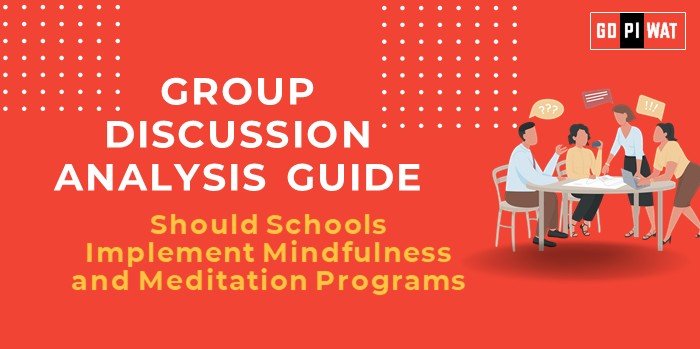📋 Should Schools Implement Mindfulness and Meditation Programs?
🌐 Introduction to the Topic
Opening Context: The growing focus on mental health and well-being in education has sparked a global movement towards integrating mindfulness and meditation into school curriculums. Advocates argue these practices improve student focus, emotional resilience, and overall academic performance.
Topic Background: Mindfulness programs in schools have roots in ancient practices but gained prominence through modern psychology, notably with Jon Kabat-Zinn’s mindfulness-based stress reduction (MBSR). Countries like the US, UK, and Australia have begun adopting such initiatives, making this topic timely and relevant for education-focused discussions.
📊 Quick Facts and Key Statistics
– ⚠️ Mental Health Crisis: WHO reports that 1 in 7 adolescents globally experience mental health conditions.
– 🌍 Adoption Rates: Over 20% of schools in the UK incorporate mindfulness in their curriculum.
– 🧘♂️ Cognitive Benefits: Research reveals a 15% reduction in student stress levels after regular meditation practices.
👥 Stakeholders and Their Roles
- 🏫 Schools: Implement and sustain programs through training and resources.
- 👨👩👧👦 Parents: Support mindfulness practices at home.
- 💼 Government: Provide funding and policy support for inclusive mental health initiatives.
- 🧠 Mental Health Experts: Design effective and age-appropriate mindfulness modules.
🏆 Achievements and Challenges
✨ Achievements:
- ✅ Improved Mental Health: Schools report lower anxiety levels among students participating in mindfulness programs.
- 📚 Enhanced Academic Performance: A study from Harvard shows that mindfulness can improve standardized test scores by 10%.
- 🌏 Global Implementation: Finland and Australia have seen success with mindfulness in their schools, citing better classroom behavior and focus.
⚠️ Challenges:
- 📖 Lack of Teacher Training: Many educators feel unprepared to guide mindfulness practices effectively.
- 🛑 Cultural Resistance: Some communities view mindfulness as religious or incompatible with their beliefs.
- 📊 Measurement of Impact: Quantifying emotional and mental well-being improvements remains complex.
🌍 Global Comparisons
United Kingdom: Nationwide mindfulness initiatives supported by government grants.
United States: Focus on trauma-informed mindfulness in schools in disadvantaged areas.
Case Study: California’s “Mindful Schools” Program: Demonstrated a 25% reduction in classroom disruptions.
💡 Structured Arguments for Discussion
✔️ Supporting Stance:
“Mindfulness programs are scientifically proven to improve student focus and reduce stress, preparing them better for academic and personal challenges.”
❌ Opposing Stance:
“The effectiveness of mindfulness programs is inconsistent, and schools should prioritize core academic subjects over supplementary activities.”
⚖️ Balanced Perspective:
“While mindfulness shows promise, it requires proper training and adaptation to cultural contexts to be fully effective.”
🧠 Effective Discussion Approaches
📝 Opening Approaches:
- 📊 Statistics-led Start: “With 1 in 7 adolescents facing mental health challenges, mindfulness offers a proactive solution to this crisis.”
- 🔧 Problem-Solution Angle: “While academic performance is the focus, student mental well-being is often neglected. Can mindfulness bridge this gap?”
🛠️ Counter-Argument Handling:
- “If mindfulness is seen as religious, programs can adopt secular approaches focusing purely on mental health benefits.”
- “Training for teachers is costly but can be offset by partnerships with NGOs and mental health organizations.”
🔍 Strategic Analysis of Strengths and Weaknesses
💪 Strengths:
- ✔️ Evidence-based mental health benefits.
- ✔️ Improved classroom behavior and student relationships.
❌ Weaknesses:
- 🚧 Resistance from cultural or religious groups.
- 🚧 Lack of trained facilitators in many regions.
🌟 Opportunities:
- 🤝 Partnership with health organizations for funding.
- 🏋️ Integration with physical education for a holistic approach.
⚡ Threats:
- 💰 Budget constraints in public schools.
- ❓ Potential misuse or misunderstanding of mindfulness practices.
📈 Connecting with B-School Applications
Real-World Applications: B-school projects can explore the scalability of mindfulness programs in underfunded schools or their long-term impact on workforce productivity.
Sample Interview Questions:
- 💬 “How can mindfulness help in improving team dynamics in corporate settings?”
- 💬 “What challenges might schools face in scaling mindfulness programs nationally?”
Insights for B-School Students:
- 🌟 Mindfulness can foster leadership qualities like emotional intelligence.
- 📚 Case studies on mindfulness can inform innovative HR policies in organizations.


